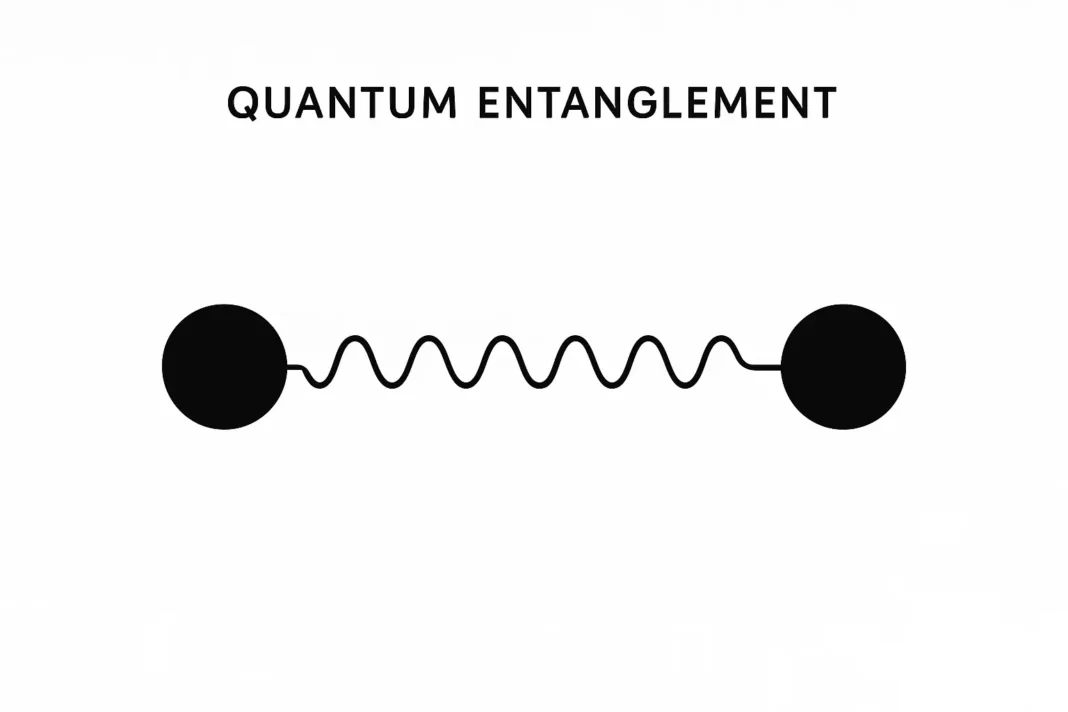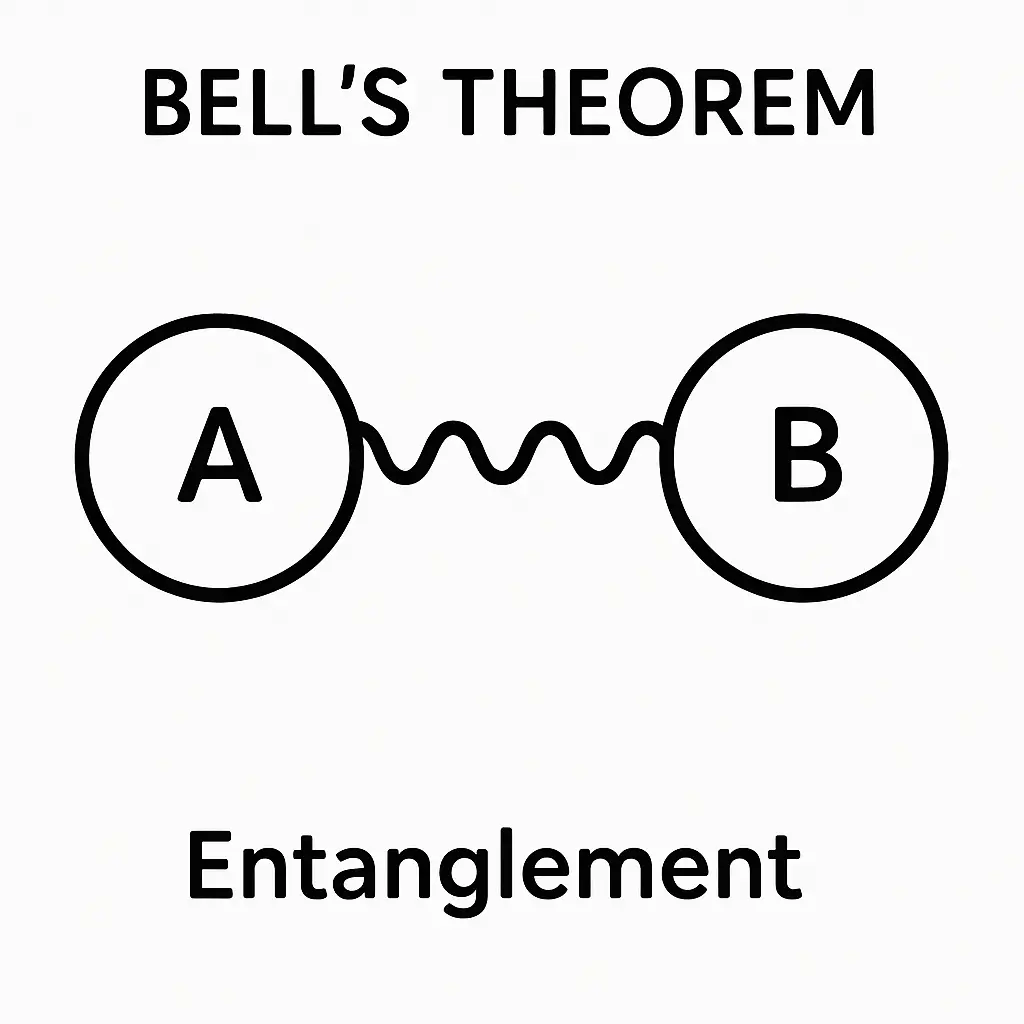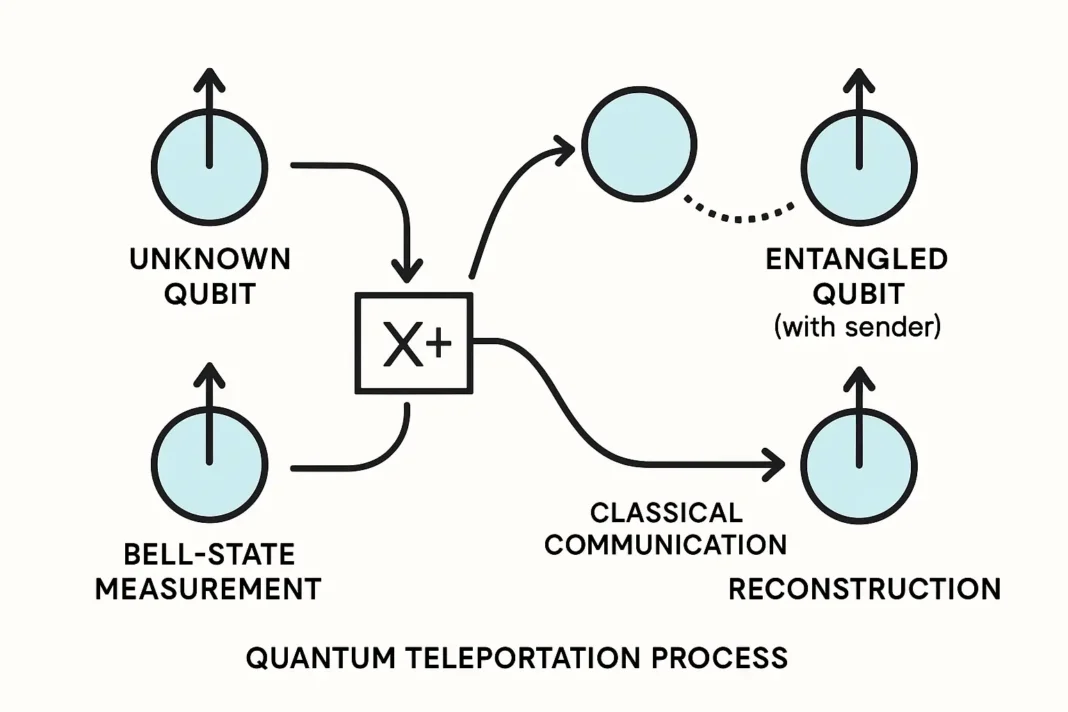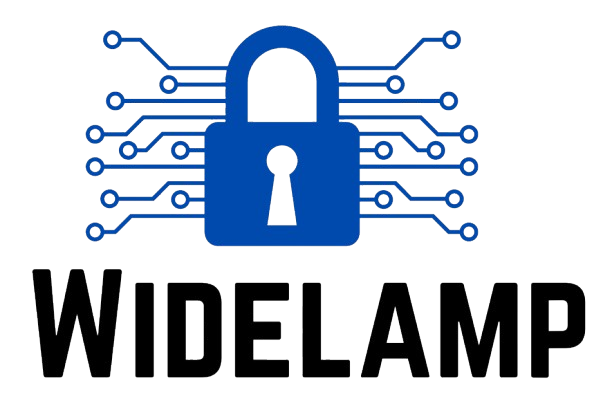|
Getting your Trinity Audio player ready...
|
Quantum entanglement stands as one of the most fascinating and revolutionary phenomena in modern physics, fundamentally challenging our understanding of reality and enabling breakthrough technologies that are transforming our world. This remarkable quantum property creates an unbreakable bond between particles, allowing them to share information instantaneously across vast distances – a connection so profound that Einstein famously called it “spooky action at a distance”. Today, quantum entanglement has moved from theoretical curiosity to practical application, powering quantum computers, securing communications, and advancing medical diagnostics.
Table of Contents
What is Quantum Entanglement? Understanding the Basics
Quantum entanglement is a phenomenon where two or more particles become interconnected in such a way that their quantum states remain correlated, even when separated by enormous distances. This means that measuring one particle instantly affects its entangled partner, regardless of the space between them.
Unlike classical physics where objects have definite properties, quantum particles exist in superposition – multiple states simultaneously until measured. When particles become entangled, they lose their individual quantum states and share a unified, combined state.
Key Characteristics of Quantum Entanglement
Non-locality: Entangled particles can influence each other instantaneously, even across cosmic distances. This phenomenon doesn’t violate Einstein’s speed of light limit because no usable information travels between the particles.
Correlation without Communication: When you measure one entangled particle and find it in a specific state, you immediately know the state of its partner without any signal being sent between them.
Fragility: Entanglement is extremely delicate and can be easily broken by environmental interference, making it both powerful and challenging to maintain.
Einstein’s “Spooky Action at a Distance”
Albert Einstein, along with colleagues Podolsky and Rosen, challenged quantum mechanics in 1935 with their famous EPR Paradox. They argued that quantum mechanics must be incomplete because it seemed to allow instantaneous influences between distant particles.
Einstein believed in local realism – the idea that objects have definite properties and can only be influenced by their immediate surroundings. The concept of entanglement violated these classical assumptions, leading Einstein to dismiss it as “spooky action at a distance”.
However, decades of experiments have proven that quantum entanglement is real and that Einstein’s classical worldview, while intuitive, doesn’t describe the quantum realm accurately.
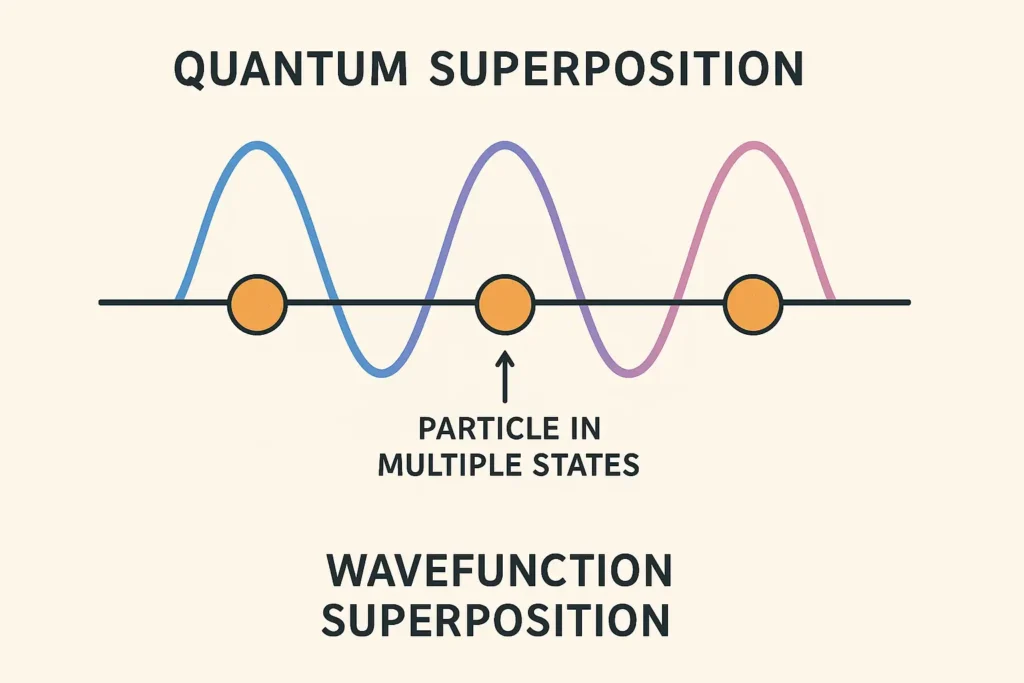
The Science Behind Quantum Entanglement
Understanding quantum entanglement requires grasping several fundamental quantum concepts that differ dramatically from our everyday experience.
Quantum Superposition: The Foundation
Quantum superposition is the ability of particles to exist in multiple states simultaneously until measured. Think of a spinning coin in the air – before it lands, it’s neither heads nor tails but both at the same time.
In the quantum world, a particle’s spin can be both “up” and “down” simultaneously until someone measures it. Only when measurement occurs does the particle “collapse” into a definite state.
Wave Function and Probability
Quantum systems are described by wave functions – mathematical objects that contain all possible information about a particle’s state. The wave function doesn’t tell us exactly what we’ll find when we measure a particle, but it gives us the probabilities of different outcomes.
When particles become entangled, their individual wave functions become inseparable. You can no longer describe each particle independently – they must be treated as a single, unified quantum system.
Bell States: The Building Blocks
Bell states are specific maximally entangled quantum states of two particles. The most famous Bell state can be written as:
|Ψ⟩ = (1/√2)(|00⟩ + |11⟩)
This means the two particles are in a superposition where they’re either both in state “0” or both in state “1”. Until measured, they exist in both possibilities simultaneously.
Measurement and Wave Function Collapse
When you measure one particle in an entangled pair, several things happen instantly:
- The measured particle “collapses” to a definite state
- The entangled partner automatically collapses to its correlated state
- The entanglement between them is destroyed
- Future measurements on either particle become independent
This collapse happens faster than light could travel between the particles, demonstrating the non-local nature of quantum mechanics.
How Quantum Entanglement Works: Simple Examples
Let’s explore quantum entanglement through practical examples that make this complex phenomenon easier to understand.
The Alice and Bob Example
Imagine two researchers, Alice and Bob, each given one particle from an entangled pair. Alice stays on Earth while Bob travels to Mars with his particle.
When Alice measures her particle’s spin and finds it pointing “up,” she instantly knows that Bob’s particle is pointing “down” – even though they’re millions of miles apart. No signal traveled between the particles; the correlation was established when they were first entangled.
This perfect correlation persists no matter how far apart the particles become, demonstrating the non-local nature of quantum entanglement.
The Magic Coin Analogy
Think of two magical coins created together and then separated. In classical physics, each coin would already be predetermined as heads or tails, even if we couldn’t see it.
But quantum coins behave differently. Until measured, each coin exists in superposition – simultaneously heads and tails. When you finally observe one coin and it shows heads, the other coin instantly “knows” to show tails, no matter the distance between them.
Photon Polarization Experiment
A common demonstration uses entangled photons with linked polarizations. Scientists create two photons whose polarizations are perfectly correlated.
When researchers measure the first photon’s polarization and find it vertical, they can predict with certainty that the second photon will also be vertical (or horizontal, depending on how the experiment is designed).
This correlation is much stronger than anything possible in classical physics and violates Bell’s inequalities, proving that quantum mechanics accurately describes reality.
Real Laboratory Results
Modern experiments have demonstrated entanglement with remarkable precision:
- Photons separated by 143 kilometers between Canary Islands
- Ground-to-satellite teleportation over 500-1,400 kilometers
- Entanglement fidelity exceeding 80% in long-distance tests
These experiments conclusively prove that quantum entanglement is real and can be reliably created and measured.
Creating Quantum Entanglement: Methods and Techniques
Scientists have developed multiple methods to create and control quantum entanglement for research and practical applications.
Spontaneous Parametric Down-Conversion
The most common method uses special crystals to create entangled photon pairs. When a high-energy photon passes through these crystals, it splits into two lower-energy photons that are automatically entangled.
This process, called “down conversion,” allows researchers to produce large numbers of entangled photon pairs quickly and reliably. The resulting photons share correlated properties like polarization or energy.
Atomic and Ionic Systems
Scientists can entangle atoms or ions by cooling them to extremely low temperatures and placing them close together. When their quantum states overlap, identical particles can become entangled.
Trapped ion systems use electromagnetic fields to hold individual ions in place while laser pulses create entanglement between them. This method enables precise control over the entangled states.
Nuclear Decay Processes
Some radioactive decay processes naturally produce entangled particles. When certain unstable nuclei decay, conservation laws ensure that the resulting particles have correlated properties.
For example, when a particle with zero spin decays into two particles, those particles must have opposite spins to maintain the total spin of zero.
Quantum Dot Technology
Quantum dots – tiny semiconductor structures – can emit entangled photon pairs through controlled processes. Scientists manipulate the electronic states in these dots to create entanglement on demand.
Fiber Optic Methods
Researchers can create entanglement by mixing photons in optical fibers. Special fiber couplers control and combine photons to produce entangled states suitable for quantum communication.
Device-Independent Methods
Recent advances include Device-Independent Self-Testing (DIST) methods developed by researchers in India. These techniques can verify entanglement in unknown quantum states without relying on specific device characteristics.
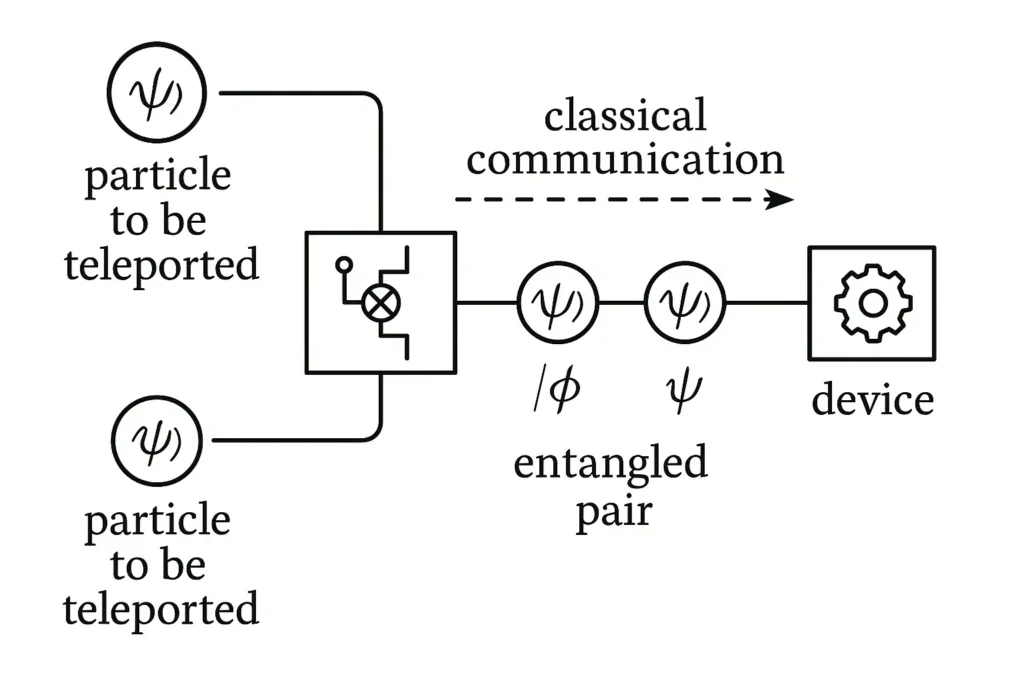
Real-World Applications of Quantum Entanglement
Quantum entanglement has moved from laboratory curiosity to powering revolutionary technologies across multiple industries.
Quantum Cryptography and Security
Quantum Key Distribution (QKD) represents the most mature application of quantum entanglement. This technology enables theoretically unbreakable encryption by using entangled particles to generate and distribute secret keys.
Major implementations include:
- SK Telecom’s Galaxy Quantum2: The world’s second smartphone with quantum cryptography technology
- Hyundai Shipyard: Uses quantum cryptography to protect defense technology
- Verizon QKD trials: Testing quantum key distribution in Washington D.C.
The security comes from quantum mechanics itself – any attempt to intercept the quantum keys changes their state, immediately alerting the legitimate users.
Quantum Computing Revolution
Quantum computers fundamentally depend on entanglement to achieve their computational advantages. Without entanglement, quantum computers would be little more than probabilistic classical machines.
Read More: 17 Advance Questions for Quantum Computing help to understand Physics behind the Quantum Computing
Key applications include:
- Shor’s Algorithm: Uses entanglement to factor large numbers exponentially faster than classical computers
- Grover’s Algorithm: Employs entangled states to search unsorted databases quadratically faster
- Quantum Error Correction: Relies on entangled qubits to detect and fix computational errors
Quantum Teleportation Breakthroughs
Scientists have achieved remarkable progress in quantum teleportation – transferring quantum information without moving particles themselves:
- 143-kilometer teleportation between Canary Islands by Zeilinger’s team
- Ground-to-satellite teleportation to the Micius satellite at 500-1,400 km altitude
- Fiber optic teleportation alongside regular internet traffic over 30 kilometers
These advances are building blocks for a future quantum internet that could enable unhackable global communications.
Financial and Banking Security
Financial institutions are implementing quantum entanglement for ultra-secure transactions:
- Vienna Bank Transfer (2004): First entanglement-based bank transaction over 1.45 km
- Quantum-secure financial networks: Protecting against both current and future quantum computer attacks
- Smart grid communications: Using quantum keys to secure energy infrastructure
Military and Government Applications
Defense organizations worldwide are deploying quantum entanglement for national security:
- Classified communications: Quantum-secured channels for sensitive government information
- Satellite communications: Protecting space-based military communications
- Intelligence operations: Ensuring secure data transmission in hostile environments
Quantum Computing and Entanglement
Entanglement serves as the fundamental resource that gives quantum computers their extraordinary power over classical systems.
How Entanglement Enables Quantum Computing
Quantum Parallelism: Entangled qubits can represent and process multiple values simultaneously, creating massive parallel computation capabilities.
Quantum Gates: Multi-qubit operations like the CNOT gate depend on entanglement to manipulate data across multiple qubits simultaneously. These gates create and control entangled states within quantum circuits.
Quantum Algorithms: Most powerful quantum algorithms exploit entanglement to achieve their speedups:
Shor’s algorithm for factoring uses entangled states to find periods in mathematical functions
Quantum simulation algorithms use entanglement to model complex physical systems
Types of Quantum Entanglement in Computing
Bell States: The simplest two-qubit entangled states, used as building blocks for larger quantum systems.
GHZ States: Multi-qubit entangled states that enable parallel operations across many qubits. These states are crucial for quantum error correction.
Cluster States: Special entangled states used in measurement-based quantum computing, where computation proceeds through measurements rather than gates.
Quantum Error Correction
Quantum computers are extremely fragile, but entanglement provides the solution through quantum error correction:
- Redundant encoding: Information is stored across multiple entangled qubits
- Error detection: Entangled states reveal when errors occur without destroying the quantum information
- Fault-tolerant computing: Enables reliable quantum computation even with noisy hardware
Current Quantum Computing Platforms
Superconducting Qubits: Companies like IBM and Google use entangled superconducting circuits to build quantum processors.
Trapped Ions: Systems from IonQ and others create entanglement between trapped atomic ions.
Photonic Systems: Companies like Xanadu use entangled photons for quantum computing.
Cold Atoms: Neutral atoms trapped by lasers and entangled for quantum computation.
Medical and Healthcare Applications
Quantum entanglement is revolutionizing medical diagnostics and treatment through ultra-sensitive quantum sensors.
Quantum Sensing in Medicine
Quantum sensors exploit entanglement to achieve sensitivity far beyond classical limits. These devices can detect magnetic fields, electric signals, and other biological phenomena with unprecedented precision.
Key advantages include:
- Subcellular resolution: Imaging individual cells and their components
- Non-invasive monitoring: Detecting signals without damaging tissues
- Real-time analysis: Continuous monitoring of biological processes
Brain Imaging and Neurology
Optically Pumped Magnetometers (OPMs) use quantum entanglement to measure brain activity:
Wearable brain scanners: Patients can move naturally during brain imaging
Magnetoencephalography (MEG): Recording neural activity with quantum precision
Early Alzheimer’s detection: Identifying brain changes before symptoms appear
Fetal and Maternal Monitoring
Quantum sensors enable revolutionary prenatal care:
Fetal magnetocardiography: Precisely monitoring fetal heart rhythms
Non-invasive fetal monitoring: Detecting conditions without ultrasound limitations
Pregnancy complication prediction: Early warning of potential problems
Cancer Detection and Treatment
Nitrogen-vacancy (NV) centers in diamond create quantum sensors for cancer research:
Cellular temperature mapping: Detecting heat signatures from tumor cells
Magnetic biomarker detection: Finding cancer markers with single-cell resolution
Drug efficacy monitoring: Real-time assessment of treatment effectiveness
Metabolic and Nutritional Disorders
Quantum sensing addresses global health challenges:
Iron deficiency detection: Quantum sensors can identify nutritional deficiencies affecting half of all children worldwide
Metabolic disorder diagnosis: Early detection when treatments are most effective
Microbiome analysis: Real-time monitoring of gut health
Medical Imaging Advancements
Quantum-enhanced medical imaging provides unprecedented detail:
Improved MRI sensitivity: Quantum sensors enhance magnetic resonance imaging
Microscopy breakthroughs: Seeing cellular structures with quantum clarity
Real-time tissue monitoring: Continuous observation of biological processes
Global Healthcare Impact
The Copenhagen Center for Biomedical Quantum Sensing, funded with $20 million, aims to translate quantum sensing from laboratories to clinical practice. Similar initiatives worldwide are developing quantum medical technologies for:
Early disease detection: Identifying conditions before symptoms appear
Personalized medicine: Tailoring treatments to individual quantum signatures
Global health equity: Making advanced diagnostics accessible worldwide
The Future of Quantum Entanglement
Quantum entanglement is poised to transform multiple aspects of society as the technology matures and scales.
Quantum Internet and Networks
The development of a global quantum internet represents the next major milestone:
Quantum repeaters: Extending entanglement over transcontinental distances
Multi-node networks: Connecting quantum computers worldwide
Distributed quantum computing: Sharing quantum processing power globally
China’s quantum satellite network and European quantum communication initiatives are building the foundation for this quantum internet.
Entanglement-as-a-Service (EaaS)
Companies are developing Entanglement-as-a-Service platforms that provide customers with network access to entangled qubits:
Cloud quantum computing: Accessing quantum processors remotely
Quantum communication services: Secure messaging using entangled particles
Scientific research platforms: Sharing quantum resources among researchers
Advanced Quantum Sensors
Next-generation quantum sensors will revolutionize multiple fields:
Dark matter detection: Quantum sensor networks searching for elusive particles
Gravitational wave astronomy: Ultra-sensitive detectors for space-time ripples
Climate monitoring: Quantum sensors tracking environmental changes
Archaeological exploration: Non-invasive quantum imaging of historical sites
Quantum-Enhanced AI and Machine Learning
The combination of quantum entanglement and artificial intelligence promises breakthrough capabilities:
Quantum machine learning: Using entangled qubits to enhance AI algorithms
Pattern recognition: Quantum advantage in complex data analysis
Optimization problems: Solving intractable classical challenges
Challenges and Limitations
Despite tremendous potential, quantum entanglement faces significant obstacles:
Technical Challenges:
Decoherence: Environmental noise destroys entanglement
Error rates: Quantum operations are prone to errors
Scalability: Building large-scale quantum systems remains difficult
Practical Barriers:
Cost: Quantum technologies require expensive specialized equipment
Complexity: Operating quantum systems demands advanced expertise
Infrastructure: Building quantum networks requires new communication systems
Regulatory and Standardization:
FDA approval: Medical quantum devices need lengthy regulatory approval
International standards: Global coordination needed for quantum internet
Security protocols: Establishing quantum-safe communication standards
Timeline for Widespread Adoption
Experts predict quantum entanglement applications will mature at different rates:
Near-term (2025-2030):
Commercial quantum key distribution systems
Quantum-enhanced medical sensors in hospitals
Small-scale quantum computers for specialized problems
Medium-term (2030-2040):
Regional quantum communication networks
Quantum-secured financial systems
Routine quantum sensing in healthcare
Long-term (2040+):
Fault-tolerant quantum computers
Quantum sensing in everyday devices
Societal Impact
The widespread adoption of quantum entanglement technologies will fundamentally change society:
- Privacy revolution: Unbreakable quantum encryption protecting personal data
- Scientific discovery: Quantum sensors revealing new phenomena
- Medical breakthroughs: Early disease detection saving millions of lives
- Computational advantages: Solving previously impossible problems
Conclusion
Quantum entanglement stands as one of the most remarkable phenomena in physics, transforming from Einstein’s dismissed “spooky action at a distance” into the foundation of revolutionary technologies. This quantum property enables particles to maintain instantaneous correlations across vast distances, defying classical intuition while opening unprecedented possibilities for computation, communication, and sensing.
Today’s applications of quantum entanglement are already changing our world. Quantum key distribution provides unbreakable security for financial transactions and government communications. Quantum computers leverage entanglement to solve complex problems beyond classical capabilities. Quantum sensors are revolutionizing medical diagnostics, enabling early disease detection and personalized treatment.
Looking ahead, the quantum internet will connect quantum computers globally, while quantum sensing networks will monitor everything from dark matter to climate change. Medical applications promise to detect diseases years before symptoms appear, potentially saving millions of lives through early intervention.
The journey from laboratory curiosity to practical technology demonstrates how fundamental physics research ultimately benefits humanity. As quantum entanglement technologies mature, they will continue to transform cybersecurity, healthcare, computing, and scientific discovery.
Understanding quantum entanglement is essential for anyone interested in the future of technology and science. This phenomenon reminds us that the universe operates according to principles far stranger and more wonderful than our everyday experience suggests, yet these same principles enable technologies that will define the next century of human progress.
The 2022 Nobel Prize in Physics recognized the scientists who proved quantum entanglement is real and developed the technologies that harness its power. Their work has launched a new quantum age where the impossible becomes routine, and the spookiest aspects of quantum mechanics become the most practical tools for solving humanity’s greatest challenges.

